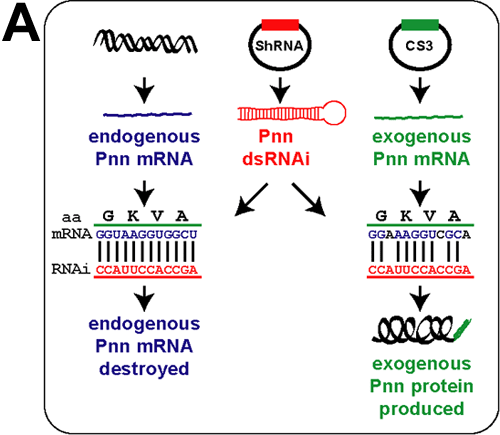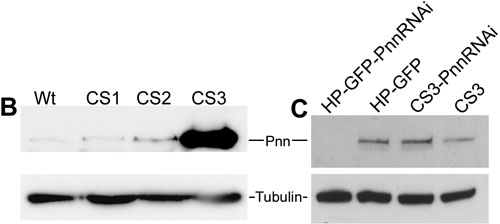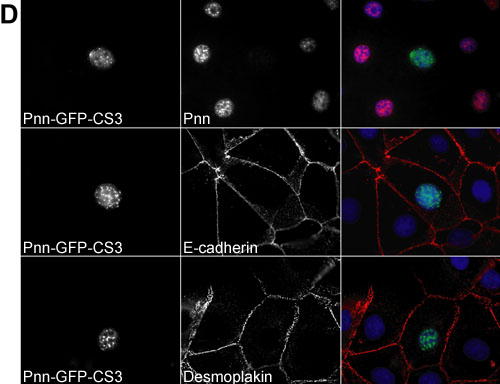![]() Figure 5 of
Joo, Mol Vis 2005;
11:133-142.
Figure 5 of
Joo, Mol Vis 2005;
11:133-142.
Figure 5. Expression of exogenous Pnn containing three conservative mutations in the RNAi target sequence can protect HCE-T cells from Pnn-RNAi
shRNAi targeting a sequence unique to Pnn generates double stranded RNA sequences that are subsequently processed and target endogenous Pnn mRNA for destruction. mRNA generated from the conservatively mutated Pnn-CS3-GFP vector is not the perfect compliment to the shRNAi sequence and therefore is not targeted for destruction, allowing exogenous GFP tagged Pnn protein to be produced (A). HEK-293 cells were cotransfected with Pnn shRNAi and wild type HpGFP or HpGFP with one (CS1), two (CS2), or three (CS3) conservative substitutions in the region to which Pnn shRNAi is targeted. A construct harboring three mutations in the shRNAi-targeted motif was the most efficient in protecting against RNAi mediated Pnn degradation (B). HCE-T cells were cotransfected with HpGFP or Pnn-CS3-GFP in the presence or absence of Pnn shRNAi. HpGFP, but not Pnn-CS3-GFP, was susceptible to Pnn RNAi mediated depletion (C). HCE-T cells stably transfected with POZ-N Flag-HA-Pnn were transiently transfected with both Pnn-CS3-GFP and Pnn shRNAi vectors. After 24 h cells were fixed and immunostained for Pnn-HA, E-cadherin or desmoplakin. Pnn-CS3-GFP was expressed in cells in which endogenous Pnn and Pnn-Flag-HA were knocked down. Levels of E-cadherin and desmoplakin were restored to those observed between untransfected cells and the morphology of the transfected cells was similar to that of controls (D). Expression of Pnn-CS3-GFP is thus capable of protecting against the consequences of Pnn-RNAi.


